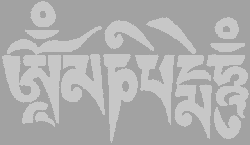Teresa Peña
Byrd Middle School
Exploratory ID Unit
HOME
The Tibetan Language

Om mane padme hum
GOAL - To recognize basic Tibetan script and to distinguish different spoken Tibetan words/phrases
OBJECTIVE - Students will create a mini dialogue with a question and an appropriate response. They will write this exchange and include their names using the Tibetan alphabet.
REFLECTION QUESTIONS - Why is language important? To what other languages do you think Tibetan is similar in written form? How? What feelings do you get when you hear foreign languages?
"Tashi Dalek" - Hello, goodbye and good fortune.
Tibet has its own language that belongs to the Tibeto-Burmese language group. Since Tibet is part of China, Chinese is taught in schools and Tibetan is taught as a second language.
The Tibetan alphabet was based on the Indian Sanskrit alphabet. Many important Buddhist canons were preserved by monks who were trained to copy the special Tibetan calligraphy.
The Tibetan alphabet is made up of four vowels and thirty consonants, and has four types of scripts

The following links provide viewers with a look at Tibetan alphabet and numbers. For those more daring the bottom link provides audio for numbers, days of the week and common phrases.
The Tibetan Alphabet and Numbers
Consonant, Vowels, and Phrases
Audio Guide for the Tibetan Language
This site was created byTeresa Peña at the NEH Summer Institute "Cultures and Religions of the Himalayan Region," held at the College of the Holy Cross, Summer 2004